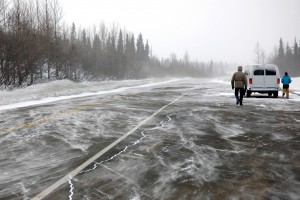Share This
Related Posts
Tags
Ice Storm 2016
By Erica Rascón on Jan 6, 2016 in News
For the past several years, the southeastern United States has been slammed with ice storms in the first quarter. You can’t stop the ice from forming, but there are several steps that you can take to keep your leasing office staff as safe as possible.
While weather forecasts are known to issue false alarms, ignoring a warning can lead to dangerous repercussions: impassable roads leave employees stranded at work and their kids stranded at school; fallen trees can cut power supplies. The weather warnings are not always accurate, but the cost of ignoring them may outweigh the benefits.
Use these tips to guide your staff safely through ice storm season in the southeast.
Ensure that snow and ice removal equipment is ready for action. Check that property management, vendors or maintenance staff have properly prepared for the season. This is especially important if the equipment needed is kept onsite and rarely used.
Jack Drobny, Senior Product Marketing Manager at Troy-Bilt, offers maintenance tips for dormant machines. “If you try to start a snow thrower after it has sat for a while, it might not start,” he says frankly.
“The first thing that you’ll want to do is remove the smart plug boot, ground it to the engine block, and clear away any external engine debris,” he says. Drobny then suggests adjusting the skid shoes and shave plate, which are particularly important for breaking up ice.
Once those items are secured, Drobny recommends inspecting the belts for signs of damage, checking the oil and adding fresh fuel as needed. “By taking care of those things early, you won’t be left out in the cold.”
Keep additional fuel, spare batteries, and chemical ice-melting products onsite when possible. Such supplies can make parking lots and sidewalks safer for you and your team.
Create your early dismissal plan in advance. Don’t wait until the height of an emergency to make decisions regarding the safety of your staff. Develop a safety plan in advance. Establishing pre-set parameters can help you take decisive action that will keep employees safe when you’re tempted to prioritize productivity. Likewise, those parameters will keep the leasing office running smoothly when rumors of a “snowpocalypse” fill the air around the water cooler.
Invest in generator maintenance. Without maintenance, your backup generator is simply a false sense of security. Failed generators can leave multifamily properties and their residents in peril. If your office is equipped with a backup generator, ensure that it is functioning properly now, before the storm hits.
Bob Birdsong, President of OK Generators recommends having your units professionally inspected. “If you have a legally required standby generator, NFPA110—the Bible of generators—it tells us, by law, that you must have a generator maintenance program in place. It even gives you a comprehensive checklist for your standby maintenance.”
Between inspections, at least three areas of the generator should be checked regularly, even weekly. Birdsong recommends generators without a “maintenance-free battery.” Traditional batteries allow users to open the unit and check water levels so that there are no surprises. Users should also check the oil and make sure it is topped off. An often-overlooked area is the radiator water level.
“If the radiator level goes down, the generator won’t be able to protect itself. It won’t know that the water isn’t there. In most cases, it will burn itself up,” says Birdsong.
Assemble emergency supplies. The brunt of ice storms rarely last for more than a few days in the southeast. End of Days preparation isn’t required. It is a good idea, though, to equip the office with preparedness kits. The office will need at least a supply of bottled water, a well-stocked and accessible first-aid kit, and a few snacks on hand with a lengthy shelf life in case an overnight stay is needed.
